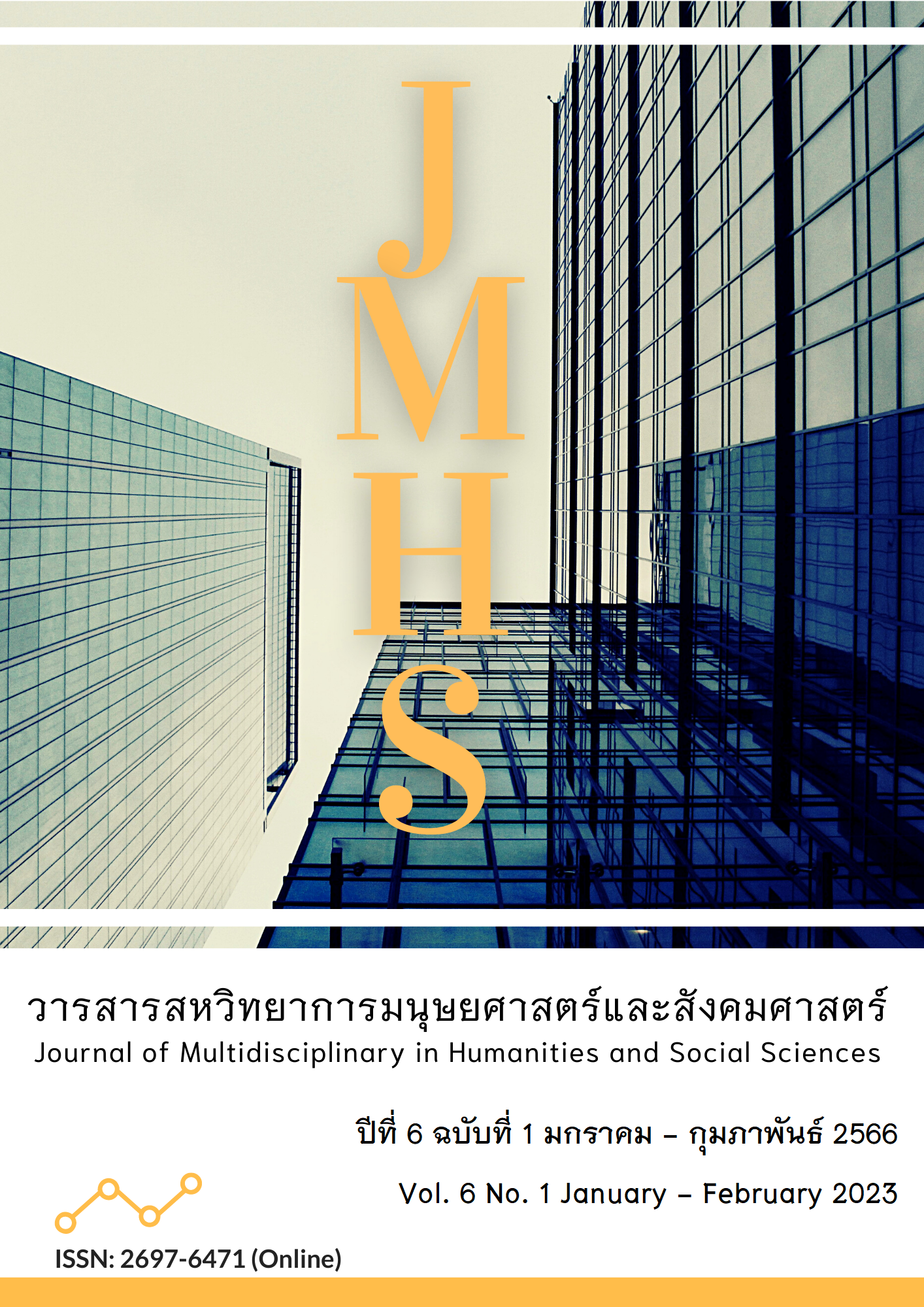การศึกษาวิเคราะห์คัมภีร์ลิงคปุราณะ
Main Article Content
บทคัดย่อ
บทความวิจัยนี้ มีวัตถุประสงค์ 1) เพื่อศึกษาวิเคราะห์คัมภีร์ลิงคปุราณะ และ 2) เพื่อศึกษาเนื้อหาที่สำคัญเกี่ยวกับสังคมวัฒนธรรมในด้านพิธีกรรม หลักปรัชญาศาสนา หลักจริยธรรมในคัมภีร์ลิงคปุราณะ เป็นการวิจัยเอกสาร ผู้วิจัยได้ดำเนินกระบวนการวิจัยตามระเบียบวิธีการวิจัยเชิงคุณภาพ ด้วยกระบวนการศึกษาและวิเคราะห์ข้อมูลจากเอกสารหรือการวิจัยเชิงเอกสารโดยการปริวรรตและแปล ทบทวนแนวความคิด ทฤษฎีและวรรณกรรมที่เกี่ยวข้อง จากเอกสารหลักฐานทั้งภาษาสันสกฤต ภาษาไทย และภาษาอังกฤษ ผลการวิจัยพบว่า 1) คัมภีร์ลิงคปุราณะเป็นคัมภีร์มหาปุราณะ ที่ประกอบ ด้วยลักษณะ 5 ประการตรงตามนิยามของคำว่ามหาปุราณะ ได้แก่ การสร้างโลก การล้างโลก วงศ์แห่งเทพเจ้า ยุคของพระมนู และวงศ์แห่งกษัตริย์ทั้งหลาย และ 2) คัมภีร์ลิงคปุราณะจัดอยู่ในกลุ่ม “ตามสะ ปุราณะ” ซึ่งเป็นกลุ่มคัมภีร์ปุราณะที่นับถือพระศิวะเป็นเทพเจ้าสูงสุด จึงแสดงวิธีการบูชาพระศิวะในรูปสัญลักษณ์ของพระองค์ ได้แก่ ศิวลิงคะ คัมภีร์ลิงคปุราณะได้บันทึกไว้ซึ่งวิวัฒนาการแห่งศิวลิงคะ สัญลักษณ์เพศชายแห่งพระศิวะ พิธีกรรม นอกจากนี้แล้ว คัมภีร์ลิงคปุราณะยังได้อธิบายรายละเอียดเกี่ยวกับหลักการทางศาสนาและปรัชญาซึ่งผู้ปฏิบัติตามอย่างเคร่งครัดสามารถทำให้วิญญาณส่วนตนเข้าถึงความเป็นหนึ่งเดียวกับวิญญาณสูงสุด ได้แก่ พระศิวเทพเจ้า
Article Details

อนุญาตภายใต้เงื่อนไข Creative Commons Attribution-NonCommercial-NoDerivatives 4.0 International License.
ทัศนะและความคิดเห็นที่ปรากฏในวารสาร ถือเป็นความรับผิดชอบของผู้เขียนบทความนั้น และไม่ถือเป็นทัศนะและความรับผิดชอบของกองบรรณาธิการ
เอกสารอ้างอิง
กุสุมา รักษมณี. (2537). ดั่งรัตนะแห่งโกสินทร์. กรุงเทพฯ: สำนักพิมพ์ศยาม.
จิรพัฒน์ ประพันธ์วิทยา. (2532). ปุราณะ. ไทย-ภารต, 17(25), 80.
จำลอง สารพัดนึก. (2530). ประวัติวรรณคดีสันสกฤต. กรุงเทพฯ: คณะโบราณคดี มหาวิทยาลัยศิลปากร.
ปรมินทร์ จารุวร. (2549). ความขัดแย้งและการประนีประนอมในตำนานปรัมปราไทย. กรุงเทพฯ: โครงการเผยแพร่ผลงานวิชาการ คณะอักษรศาสตร์ จุฬาลงกรณ์มหาวิทยาลัย
สุภาพร พลายเล็ก. (2557). การศึกษาเปรียบเทียบเรื่องจักรวาลวิทยาในคัมภีร์วิษณุปุราณะและไตรภูมิพระร่วง(วิทยานิพนธ์ศิลปศาสตรดุษฎีบัณฑิต). มหาวิทยาลัยศิลปากร.
A Board of Scholars. (1970). Ancient Indian Tradition and Mythology. Delhi: Motilal Banarsidass.
A Board of Scholars. (1990). The Linga Purana. Delhi: Motilal Banarsidass.
Amarasinha. (1998). Amarakosah. Varanasi: Chowkhamba Sanskrit Series Office.
Bharadvaja, K. (1981). A Philosophical Study of the Concept of Visnu in the Puranas. Delhi: Motilal Banarsidass.
Macdonell, A.A. (1971). A History of Sanskrit Literature. (2nd ed.). Delhi: Motilal Banarsidass.
Prapandvidya, C. (1975). Dharmaranya Purana : A Cultual Study. Baroda: The M.S. University of Baroda.
Shastri, J. L. (1975). Lingapuranam. Delhi: Motilal Banarsidass.
Swami Madhavananda. (1950). The Brhadaranyaka Upanisad. Calcutta, India: Advaita Ashrama.
Verma, P. (1988). Social Philosophy of the Mahābhārata and the Manu Smṛti. New Delhi: Calssical Publishing Company.
Wilson, H.H. (1980). Viṣṇu Purāṇa: A System of Hindu Mythology and Tradition. Vol. I. Delh: Nag Publishers.


